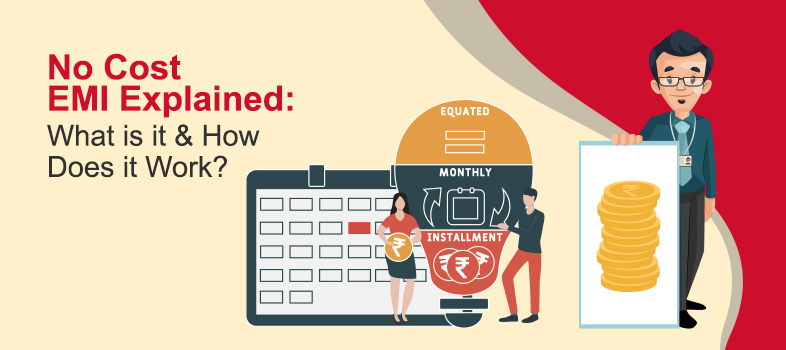The no-cost EMI plan is becoming a popular way for customers to purchase relatively expensive products that they would otherwise be unable to afford.
Flipkart was the first to launch the no-cost EMI payment mechanism, and other e-commerce companies, such as Amazon India, quickly followed suit. Customers can use this payment option to buy pricey products online in monthly instalments rather than paying the whole amount at once. While it’s nice to not have to pay the entire cost upfront and instead spread it out over a few months, the consumer ends up paying more for the goods than it’s worth. Let’s have a look at how this works.
How Does No Cost EMI Work?
E-commerce companies like Flipkart and Amazon India offer interest-free EMI plans with a 15 percent interest rate. Nowadays, the most frequent approach employed by e-commerce companies is to give a discount equal to the amount of interest owed.
To illustrate, let’s say you want to buy a Rs.30,000 phone. If the interest rate on a 3-month EMI plan is 15%, you will be required to pay a total of Rs.4,500 in interest. In a no-cost EMI programme, however, you must renounce the rebate and pay the full price of the smartphone over time in EMIs. So, what does that imply to you? If you pay for the phone up front, you will receive a discount of Rs.4500, bringing the total price down to Rs.25,500. You must pay the entire price of Rs.30,000, which is divided into EMIs, if you want to buy the phone with a no cost EMI programme. The retailer receives a portion of the money, while the financer receives the interest.
The interest amount is applied to the price of items that are not marked as reduced. In the example above, a Rs.30,000 smartphone purchased through a 3-month no-cost EMI deal would cost you Rs Rs.34,500, which will be paid over three months. However, since the RBI issued a circular in 2013 prohibiting no-cost EMIs, this practise is no longer employed. According to the circular, banks are unable to offer no-cost EMIs because “the interest portion is often hidden and passed on to the client in the shape of a processing fee.”
Is No Cost EMI Really No Cost?
As you may have guessed, the no-cost EMI isn’t actually free. In truth, the term “no cost EMI” is misleading because you wind up paying either the full price for a reduced goods or a higher interest rate if the product is not discounted. Because of the first example we described above on how no cost EMI works, it’s termed no cost EMI.
These days, e-commerce companies discount the goods to the precise amount of interest, bringing the amount due to the product’s true price. It’s termed no cost EMI since there’s no additional fee on top of the product price.
Benefits of No Cost EMI
- Top eCommerce sites like Amazon and Flipkart provide this financing option. You can use this service regardless of which bank account you have or whether you have a credit or debit card.
- There are no interest charges, extra expenses, or down payments necessary.
- This strategy works best during the holiday season, when you need to purchase in quantity while staying within your budget.
- This feature is also applicable to exchange offers.
What is the Difference between No Cost EMI & Regular EMI?
The main distinction is that when you pay for a product with regular EMIs, your EMI amount includes both the interest component and the processing costs. You may also turn the price of your items into interest-free EMIs if you pick no cost EMI.
Simply explained, a standard EMI is equal to the amount plus interest, but a no cost EMI is equal to the amount only.
When Should You Choose No Cost EMI?
- You desire to get a costly or well-known thing that you can’t afford or that is beyond of your price range.
- You don’t have the funds to pay in full right now.
- You’re getting a fantastic deal.
You want to improve your credit score, and a modest loan can help.

